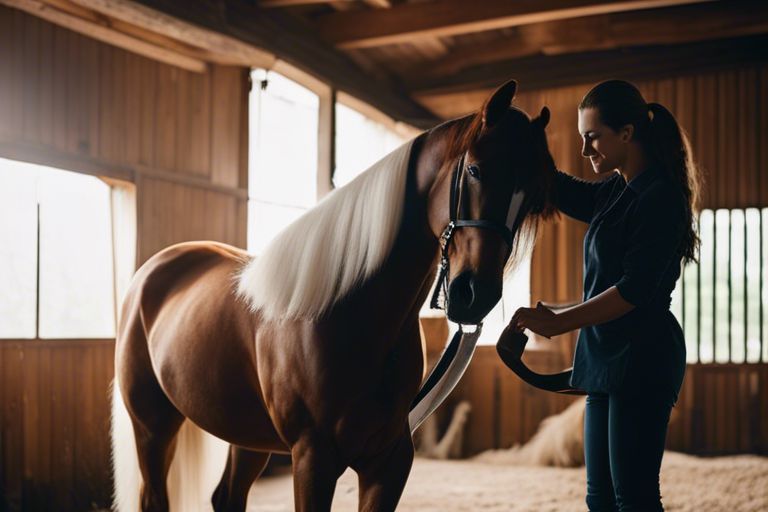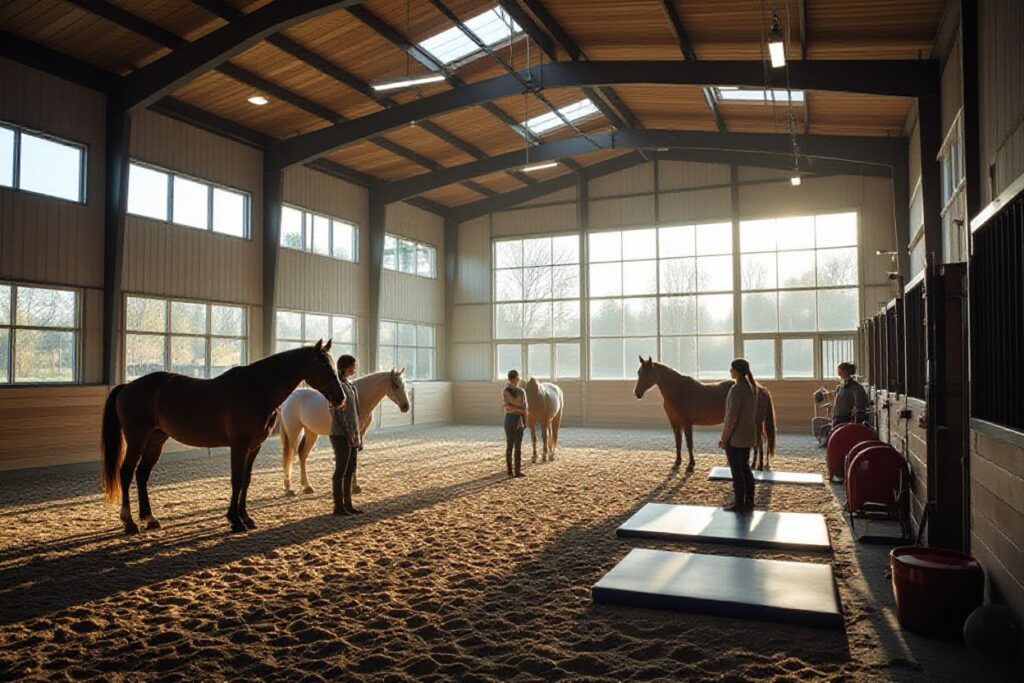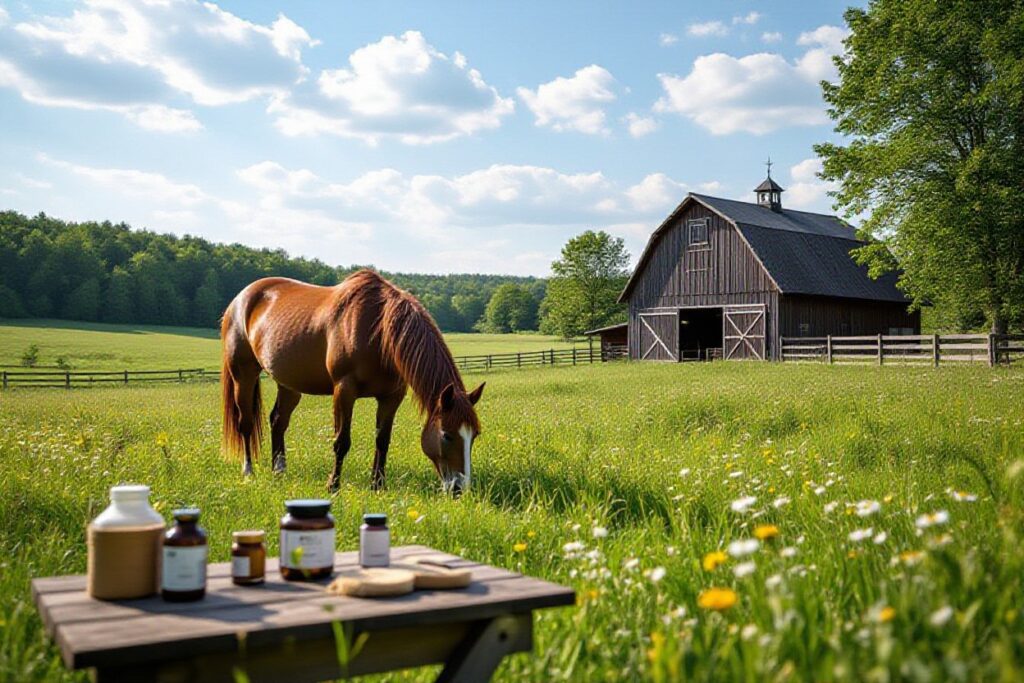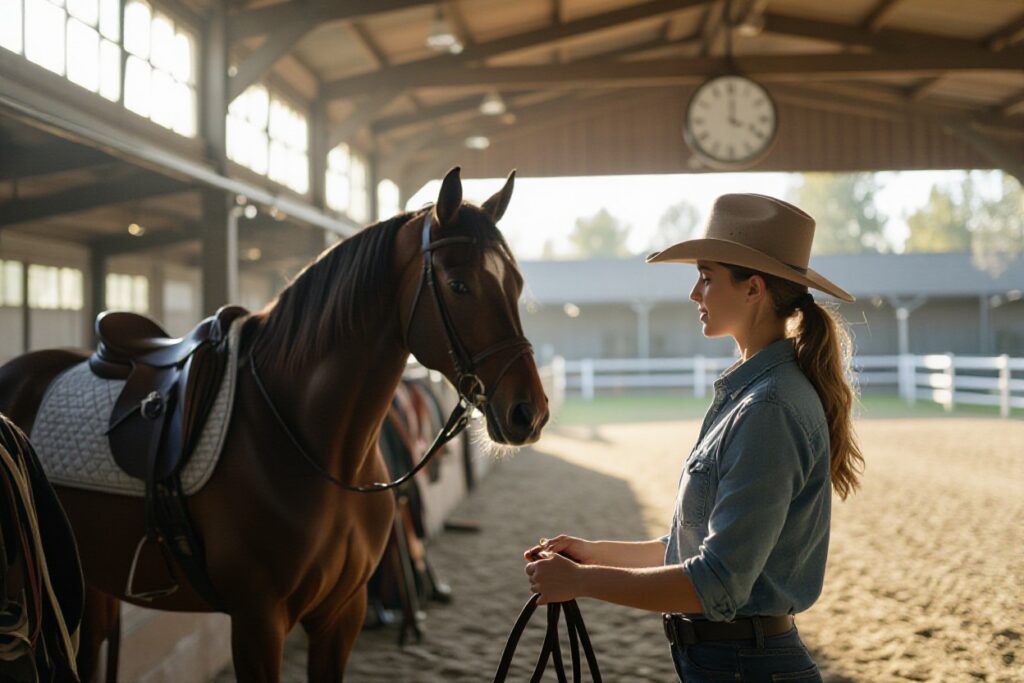Many horse owners struggle with keeping their horse’s mane and tail looking healthy and tangle-free. In this guide, you will learn imperative tips and techniques to maintain your horse’s mane and tail to ensure they are always in top condition. By following these care instructions, you can promote healthier hair growth and prevent issues such as tangles and breakage. Let’s dive in and learn how to give your horse’s mane and tail the attention they deserve!
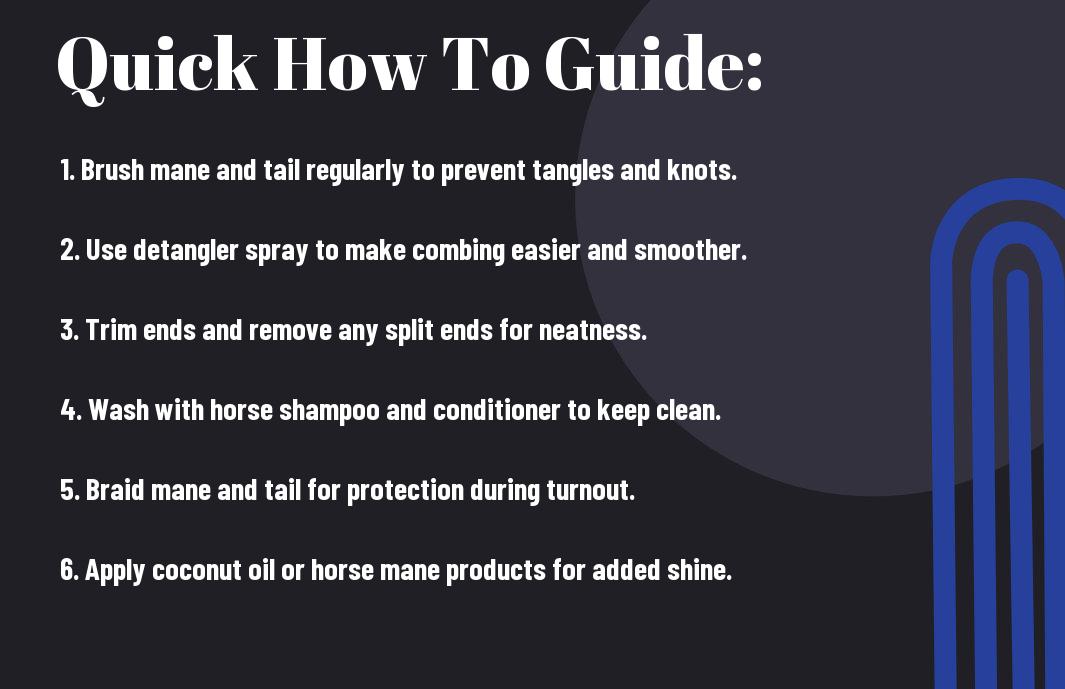
Understanding the Importance of Mane and Tail Care
Why Regular Grooming is Essential
To maintain healthy manes and tails, it’s necessary to establish a regular grooming routine. Grooming not only helps your horse look neat and tidy, but it also promotes good circulation and skin health. Regular brushing helps distribute natural oils along the hair shaft, keeping the mane and tail moisturized and free from tangles. Additionally, grooming allows you to inspect for any signs of skin issues or parasites, catching them early before they become more serious.
Common Problems Associated with Neglected Manes and Tails
The neglect of your horse’s mane and tail can lead to various issues such as tangles, matted hair, dryness, and even skin infections. Tangles and mats can be painful for your horse and may require cutting, causing damage to the hair. Dry, brittle hair is more prone to breakage and splitting, leading to an unkempt appearance. Skin infections can arise from trapped dirt and moisture in neglected manes and tails, causing discomfort and requiring veterinary attention.
Understanding the importance of regular grooming and care for your horse’s mane and tail is crucial for their overall health and well-being. By dedicating time to proper grooming practices, you can prevent common issues associated with neglected manes and tails, keeping your horse comfortable, healthy, and looking their best.
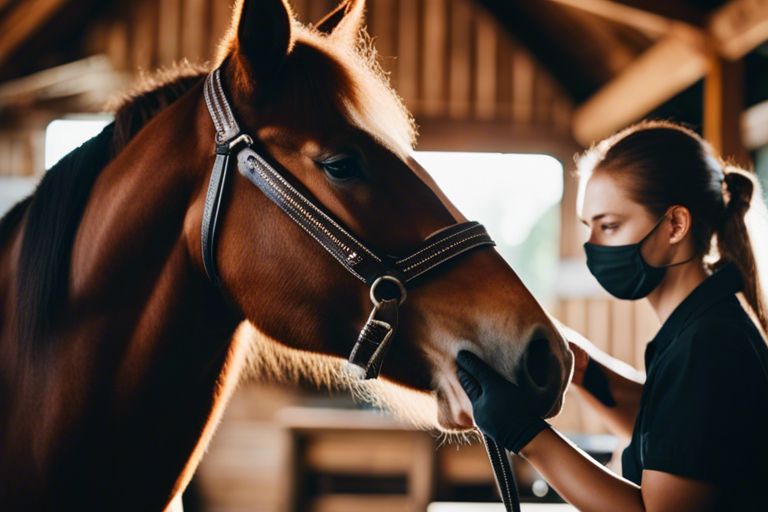
Preparing for Mane and Tail Maintenance
Little preparation goes a long way when it comes to maintaining your horse’s mane and tail. Before submerging into grooming and styling, it’s necessary to gather all the necessary tools and supplies.
Gathering Essential Tools and Supplies
To start, make sure you have a good quality detangler to help tackle any knots and tangles in your horse’s mane and tail. Additionally, having a mane comb or brush, tail brush, and scissors will help you groom and trim with precision. Don’t forget to have rubber bands or braiding bands on hand if you plan on styling your horse’s mane or tail.
Choosing the Right Products for Your Horse’s Coat Type
Right products are crucial when it comes to maintaining your horse’s mane and tail. Different coat types require specific grooming products to keep them healthy and looking their best. For example, if your horse has a thick mane and tail, you may need a heavier detangler or conditioning spray. On the other hand, if your horse has a fine mane and tail, opt for lighter products that won’t weigh down the hair.
Supplies: Make sure you invest in quality products that are tailored to your horse’s specific needs to achieve the best results. Using the wrong products can lead to dryness, breakage, or build-up, so choosing the right ones is key to maintaining a healthy mane and tail.
How to Brush Your Horse’s Mane and Tail
Not only does regular brushing keep your horse’s mane and tail looking neat and tidy, but it also helps to prevent tangles and knots that can be painful for your horse. Here are some tips on how to effectively brush your horse’s mane and tail:
Tips for Effective Brushing Techniques
- Start from the bottom and work your way up to prevent pulling on the hair and causing discomfort for your horse.
- Use a detangler spray to help make brushing easier and prevent breakage of the hair.
- Be gentle and patient when working through knots and tangles to avoid causing pain or stress to your horse.
After you have finished brushing, use your fingers to gently comb through the mane and tail to ensure you haven’t missed any knots or tangles.
Factors to Consider When Brushing Different Coat Types
Assuming you have a horse with different coat types, it is important to consider the following factors:
- For a thick coat, use a wide-toothed comb to prevent breakage and make brushing easier.
- For a thin coat, use a softer brush to avoid irritating the skin and causing discomfort to your horse.
- Consider the weather conditions when brushing your horse’s mane and tail, as extreme heat or cold can affect the hair and skin.
Assume that different coat types require different brushing techniques to keep your horse comfortable and looking its best.
Dealing with Knots and Tangles
On occasion, you may come across knots and tangles in your horse’s mane and tail. When this happens, it is important to address them promptly to prevent further damage to the hair.
Brush through the knots and tangles carefully and slowly to avoid causing pain or discomfort to your horse. You can also use a detangler spray to help loosen stubborn knots and make them easier to work through.
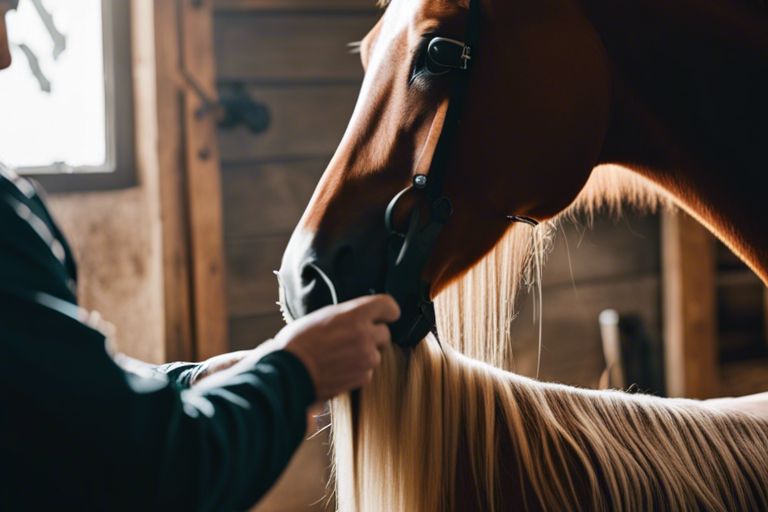
Detangling and Conditioning Your Horse’s Mane and Tail
Methods for Gentle Detangling
Tail detangling can sometimes be a challenging task, especially if your horse’s mane or tail is prone to tangling. To make the process easier for you and more comfortable for your horse, it’s crucial to use gentle methods. **Be patient and **gently work through knots and tangles with your fingers or a wide-toothed comb. Start at the bottom of the hair strands and work your way up to prevent breakage. **Regularly detangling your horse’s mane and tail will help prevent painful knots and mats from forming.**
The Importance of Regular Conditioning
Tail conditioning is necessary for maintaining healthy and beautiful hair for your horse. **Regularly conditioning your horse’s mane and tail helps keep the hair soft, supple, and shiny.** Conditioning also helps to prevent breakage and split ends, making it easier to detangle and manage your horse’s hair. **A well-conditioned mane and tail are less prone to tangling and matting.**
ImportanceRegular conditioning not only keeps your horse’s hair looking its best but also promotes overall hair and skin health. **By incorporating conditioning into your horse’s grooming routine, you are taking proactive steps to prevent dryness, brittleness, and damage to the hair shaft.** This extra care will pay off in the long run with a mane and tail that are not only beautiful but also strong and healthy.
How to Choose the Right Conditioner for Your Horse
Little when selecting a conditioner for your horse, it is necessary to choose a product specifically designed for equine hair. Look for **conditioners that are formulated to nourish and hydrate the hair without leaving a greasy residue**. Opt for products that contain natural ingredients such as aloe vera, coconut oil, or argan oil, which are known for their moisturizing and detangling properties. **Avoid using human hair conditioners, as they may contain ingredients that are not suitable for your horse’s hair.**
Conditioning After shampooing your horse’s mane and tail, apply the conditioner evenly throughout the hair, focusing on the ends where tangles are most likely to form. **Leave the conditioner on for the recommended time according to the product instructions before rinsing thoroughly.** For added hydration and shine, you can also leave a small amount of conditioner in the hair without rinsing. **Regular conditioning will help keep your horse’s mane and tail looking healthy and silky smooth.**
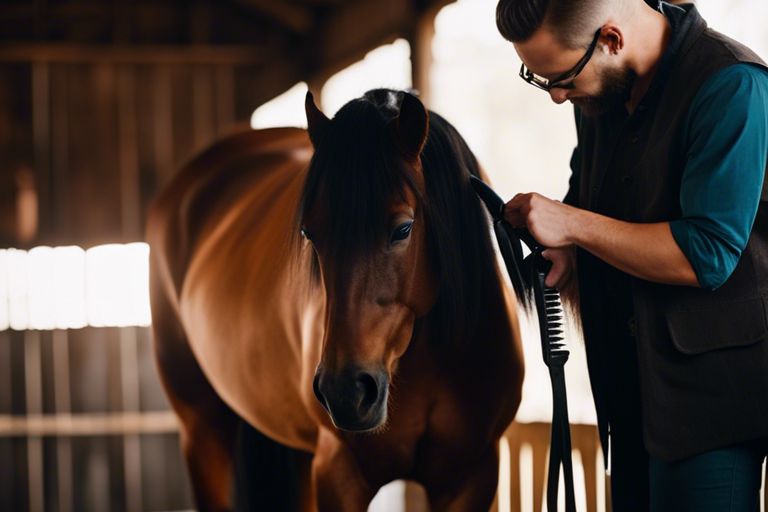
Styling and Trimming Your Horse’s Mane and Tail
Unlike human hair, your horse’s mane and tail require special care and attention to keep them looking healthy and beautiful. Regular styling and trimming are imperative parts of maintaining your horse’s mane and tail.
Basic Styling Techniques for Different Breeds
On some breeds, the mane and tail are left long and flowing, while on others, they are trimmed short for practicality. For breeds with long manes and tails such as Friesians or Andalusians, basic styling involves regular brushing and conditioning to prevent tangles and keep the hair healthy. For breeds like Quarter Horses or Arabians with shorter, neatly trimmed manes and tails, you may need to use clippers to maintain the desired length and shape.
How to Trim Your Horse’s Mane and Tail Safely
There’s a certain level of skill required when it comes to trimming your horse’s mane and tail. To ensure a safe and successful trim, it’s best to have someone experienced show you the proper techniques. Using sharp, clean scissors or clippers, always trim small amounts at a time and step back frequently to assess the overall look.
To avoid any accidents or injuries, always work in a well-lit area and take your time when trimming. If you’re unsure about how to proceed, don’t hesitate to seek guidance from a professional groomer or your veterinarian.
Factors to Consider When Deciding on a Trim
To maintain your horse’s mane and tail in the best possible condition, it’s imperative to consider several factors before deciding on a trim.
- Length: Consider the length that is appropriate for your horse’s breed and discipline.
- Thickness: Determine if your horse’s mane and tail need thinning out for a neater appearance.
- Growth pattern: Take into account how the hair naturally falls and consider this when trimming to achieve a balanced look.
This ensures that your horse’s mane and tail remain healthy and manageable, enhancing their overall appearance.
Mane
When deciding on a trim for your horse’s mane, you must consider factors such as length, thickness, and growth pattern. This will help you achieve a balanced and aesthetically pleasing look for your horse.
Horses
Importantly, always prioritize safety when styling and trimming your horse’s mane and tail. Remember to seek guidance or assistance if you’re unsure about the process, and take your time to ensure a successful outcome.
Common Mistakes to Avoid When Maintaining Your Horse’s Mane and Tail
Over-Brushing and Under-Brushing
Keep in mind that when it comes to grooming your horse’s mane and tail, balance is key. Over-brushing can lead to hair breakage and split ends, while under-brushing can cause tangles and matting. To avoid these issues, you should aim to brush your horse’s mane and tail regularly but with gentle strokes. Start from the bottom and work your way up, using a detangler spray if needed to help prevent any knots.
Using the Wrong Products or Techniques
Common mistakes include using human hair products on your horse or using improper grooming tools that can damage your horse’s mane and tail. You should always use products specifically designed for equine hair care and grooming techniques that are gentle yet effective. Avoid harsh brushes or combs that can cause discomfort to your horse.
Mistakes in this area can not only affect the appearance of your horse’s mane and tail but also impact the overall health of the hair. Using the right products and techniques will help maintain the luster and strength of the hair, keeping your horse looking and feeling its best.
Ignoring Regular Trimming and Conditioning
Clearly, you should not overlook the importance of regular trimming and conditioning when caring for your horse’s mane and tail. Trimming prevents split ends and keeps the hair at a manageable length, while conditioning helps keep the hair soft and healthy. Horses with neglected mane and tail care are more prone to tangles, breakage, and overall discomfort.
Conclusion
Now that you have learned how to maintain your horse’s mane and tail, you can implement these tips into your grooming routine to keep your horse looking healthy and beautiful. Remember to regularly brush and comb their mane and tail to prevent tangles and knots, and to apply conditioner to keep their hair soft and manageable. By following these simple steps, you can help prevent breakage and keep your horse’s mane and tail in top condition.
Additionally, be sure to pay attention to any signs of skin irritation or dryness, as this could indicate a need for extra care or a change in grooming products. Lastly, by incorporating regular grooming sessions into your horse care routine, you can build a stronger bond with your horse and ensure that they not only look their best but also feel their best. So, take the time to pamper your horse’s mane and tail, and enjoy the benefits of a well-groomed equine companion.
FAQ
Q: Why is it important to maintain my horse’s mane and tail?
A: Maintaining your horse’s mane and tail is important for both their appearance and overall health. Regular grooming helps prevent tangles, mats, and potential skin issues that can arise from neglect.
Q: How often should I groom my horse’s mane and tail?
A: It is recommended to groom your horse’s mane and tail at least a few times a week to prevent tangles and matted hair. However, the frequency may vary depending on your horse’s activities and the condition of their mane and tail.
Q: What tools do I need to maintain my horse’s mane and tail?
A: To maintain your horse’s mane and tail, you will need a good-quality mane and tail brush or comb, detangler spray, and possibly a mane pulling comb if you need to thin out the mane for showing purposes.
Q: How can I prevent mane and tail damage while grooming?
A: To prevent damage while grooming your horse’s mane and tail, make sure to use gentle, downward strokes when brushing or combing. Start from the ends and work your way up to the roots to avoid causing pain or breakage.
Q: Are there any special treatments I can use to enhance my horse’s mane and tail?
A: Yes, there are various mane and tail conditioning products available in the market that can help moisturize, detangle, and add shine to your horse’s mane and tail. Regular use of these treatments can improve the overall health and appearance of the mane and tail.
